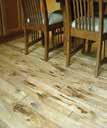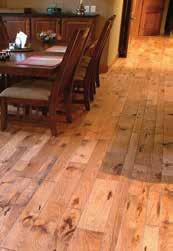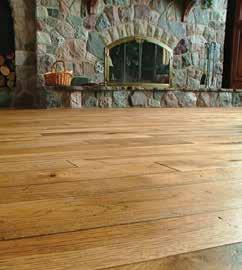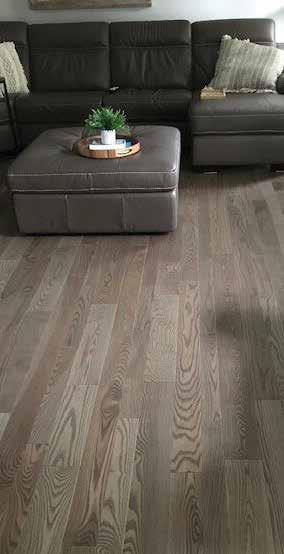WORLD MEDICINE TRADITIONAL



Publishers John & Trina Voell III
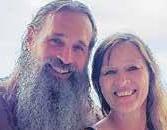
Assistant to the Publishers Carolyn Coogan
Design & Production John & Trina Voell III
Editor Martin Miron
Proofreader Randy Kambic
Calendar Theresa Archer
Sales & Marketing John & Trina Voell III

Distribution Kathy Matteo John & Trina Voell III
Website Design Locable
Website & Social Media SherTech
CONTACT US
734-757-7929
Publisher@HealthyLivingMichigan.com HealthyLivingMichigan.com
P.O. Box 2717, Ann Arbor, MI 48106
NATIONAL TEAM
CEO Kimberly B. Whittle
National Editor Sandra Yeyati
Editor Brooke Goode
Copy Editor/Proofreader Melanie Rankin
Design & Production
National Advertising

Gabrielle W-Perillo
Lisa Doyle-Mitchell
Natural Awakenings Publishing Corporation
350 Main Street, Suite 9B Bedminster, NJ 07921
Ph: 239-206-2000
NaturalAwakenings@KnoWEwell.com
© 2023 by Natural Awakenings. All rights reserved. Although some parts of this publication may be reproduced and reprinted, we require that prior permission be obtained in writing.
Natural Awakenings is a free publication distributed locally and is supported by our advertisers. Please call to find a location near you or if you would like copies placed at your business.
We do not necessarily endorse the views expressed in the articles and advertisements, nor are we responsible for the products and services advertised. Check with a healthcare professional regarding the appropriate use of any treatment.
Natural Awakenings is printed on recycled newsprint with soy-based ink.

October has arrived, and daily I find myself taking delight in all the scents of the season, including simmering cloves and cinnamon, the aroma of freshly cut herbs from the garden and the crisp smell of cool autumn air, which I really love. Now is a time to get cozy and snuggle up again in flannel everything! Admittedly, I still revel in the childhood pastime of scattering crunchy leaves by hand and foot all around the trails on my afternoon walks. Looking up at the trees themselves, I sense their age-old understanding and am reminded of the ebb and flow of life as I find peace in nature’s balance.
Speaking of time-tested wisdom, our World Medicine theme this month brings us an abundance of it—rooted in tradition, experience and observation. It’s also timely that October 9 is Indigenous Peoples’ Day, because Indigenous medicine has been an integral resource for centuries in communities around the world. According to the World Health Organization, 88 percent of all countries are estimated to use traditional medicine such as herbal remedies, acupuncture and shamanism, and I’m happy to say that our feature story reports that these practices are even increasingly being recognized by Western medicine, especially in collaboration with integrative, holistic and regenerative treatments.
Since I’ve always felt aligned with the belief that the body has the ability to heal itself and that nature provides everything we need to support this process, in my home there are a plethora of herbal teas, tinctures, essential oils and other plant-based products that can be used to address a variety of health conditions. As a family, we always look to avoid harsh chemicals and synthetic additives, too, so whenever there is a product or solution that is Earth-based, we are all for that.
World medicine is considered to be reliable and trustworthy, with much of it focusing on natural remedies supporting overall health and well-being, all of which have been proven to be effective and valuable over the years. In fact, plants have been used for their healing properties since ancient times and continue to be an important source of medicinal and holistic remedies. Learn how some of these “lost traditions” are now gaining new respect.
Something else that has withstood the test of time is traditional martial arts, which date back more than 2,000 years and have blossomed into about 200 styles. Originally devised to assist in hunting or protection, most have expanded yet retain a philosophical and spiritual base for mind-body-spirit connection. I remember years ago watching my kids learning taekwondo and being completely fascinated by the discipline, strength and confidence it instilled. I will say it took me some time before I gained the confidence myself to step out on the mat and give it a try, but once I did, it was amazing to witness how it transformed the entire family. We hope you enjoy the information in this issue on a variety of martial art styles as well as an introduction to qigong and tai chi, which are ancient Chinese practices promoting physical and mental health through the use of energy flow and mindful moments.
As we welcome in the cooler temperatures, hopefully you are capturing many moments of revelry and joyful seasonal pastimes of your own. Curl up with this issue when you can and we know you’ll find new insight, inspiration and opportunities for healing along the way.
Yours in Health,



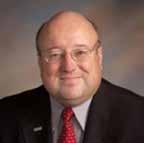


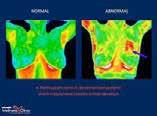
Natural Awakenings is your guide to a healthier, more balanced life. In each issue you’ll find cutting-edge information on natural health, nutrition, fitness, personal growth, green living, creative expression and the products and services that support a healthy lifestyle.

12

To advertise with Natural Awakenings, please contact us at 734-757-7929 or email Publisher@HealthyLiving Michigan.com. Deadline for ads: the 12th of the month.
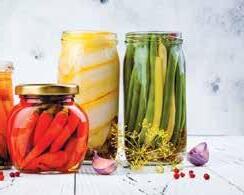
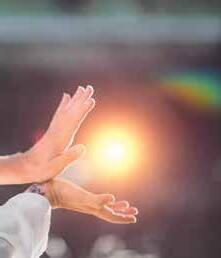
Email articles, news items and ideas to: Publisher@ HealthyLivingMichigan.com Deadline for editorial: the 12th of the month.
CALENDAR SUBMISSIONS
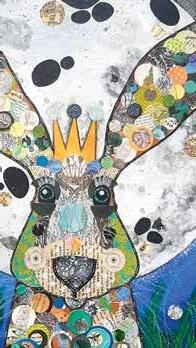
Submit Calendar Events at: HealthyLivingMichigan.com. Deadline for calendar: the 12th of the month.
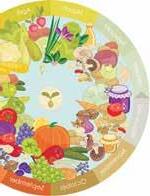
Advertise your products or services in multiple markets! Natural Awakenings Publishing Corp. is a growing franchised family of locally owned magazines serving communities since 1994. To place your ad in other markets call 239-434-9392. For franchising opportunities call 239-530-1377 or visit NaturalAwakenings.com.

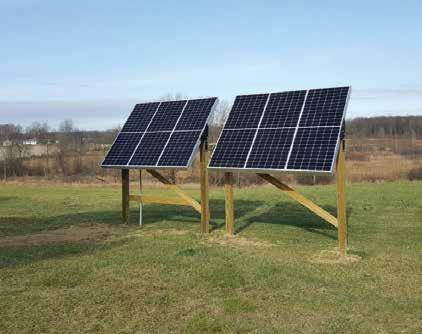
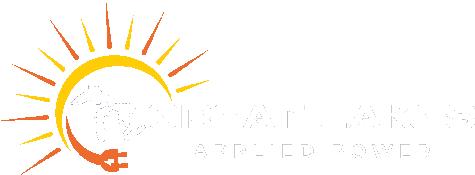
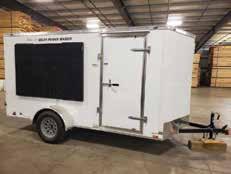


Agape Organic Farms wants fall yard scraps and treasures, including acorns and other masts. They shun black walnuts because of the risk of pharynx punctures to the pigs. They will also take bagged leaves, unbleached and unpainted pumpkins, squash and any bagged fall vegetable garden clean-up. They can also use dry straw bales for layered bedding and wet ones to use to create windbreaks for the animals. The farm produces food for Michigan restaurants, markets and food lovers. Shara LaFave, one of only two Black organic farmers in the state of Michigan, owns one of only nine Black-owned farms.
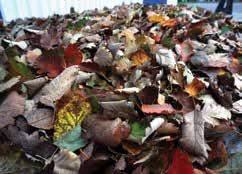
La Fave says, “At Agape Organic farms, we believe good food doesn’t happen by accident. Our passion is to raise happy, healthy animals in a humane way and provide tasty and nutrient-dense and wholesome mushrooms. We breed only the finest-quality Berkshire Pork and grow our mushrooms from culture to fruit, so we can guarantee our products are of the highest quality. We are committed to sustainable farming practices and we are a Certified Organic farm. That means raising and growing healthy food while protecting the environment and human health.”
Location: 1905 E. Dexter Trail, Dansville. For more information, call 517-604-0739, email Sharatrierweiler@icloud.com or visit Agape OrganicFarms.com.
Michigan’s first cannabis-infused sodas have been introduced by Franklin Fields, a Lansing-based cannabis cultivator and processor, and Sweet Justice, the country’s first cannabis cola.

Cofounder Jocelyn
Tse says, “These are sophisticated adult beverages with unique flavor and cannabinoid profiles to suit a wide array of drinkers.” They use small amounts of real cane sugar, no high-fructose corn syrup, natural cola flavorings and essence, and lower carbonation to minimize gas bloating, to deliver a smooth, balanced traditional cola with a THC twist.
The four flavors include OG Cola with 10 milligrams (mg.) THC; Cherry Cola with 10 mg. THC; Elderberry Pom with 5 mg. each THC and CBD; and Pacific Island Punch with 10 mg. THC and 5 mg. CBD.
Sweet Justice donates a portion of proceeds to the Great Lakes Expungement Network (GLEN), a collection of community-based organizations, professionals, businesses and criminal defense attorneys dedicated to providing Michiganders with criminal records an opportunity for a clean slate through fee-free expungements.
For more information, visit DrinkSweetJustice.com or Franklin Fields.com.
is Breast Cancer Awareness Month, and the annual American Cancer Society fundraising walk will take place at 11 a.m., October 14, at the Michigan State Capitol Building. Pre-walk activities begin at 10 a.m., with Zumba at 10:20.

The American Cancer Society Making Strides Against Breast Cancer is a celebration of courage and hope, a movement uniting communities to end breast cancer as we know it, for everyone. Do not bring pets or tobacco to the walk. Participants can raise funds digitally and easily through their toll-free number and website.
Location: 100 N. Capitol Ave., Lansing. For more information, call 1-800-227-2345 or visit LansingMIStrides@cancer.org.
People that shop at the Meridian Township Farmers Market at Marketplace on the Green are helping to support local pantries and food kitchens. The year-round market features vendors offering farm, food and crafts, and a majority of the products are grown locally or within the state.

Hours are 3 to 7 p.m. Wednesdays and 8 a.m. to 2 p.m. Saturdays. Shoppers can also look for Meridian Market Gleaning Project boxes found at most vendor stalls to donate goods and help fight local food insecurity. The fall produce selection includes pumpkins, squash, local meat, eggs, milk, baked goods, apples and hot Mexican, Mediterranean and Spanish cuisine. There are gluten-free baked goods, honey, maple syrup, coffee, kombucha and more.
Location: 1995 Central Park Dr., Okemos. For more information, call 517-712-2395 or visit Meridian.mi.us/farmersmarket.

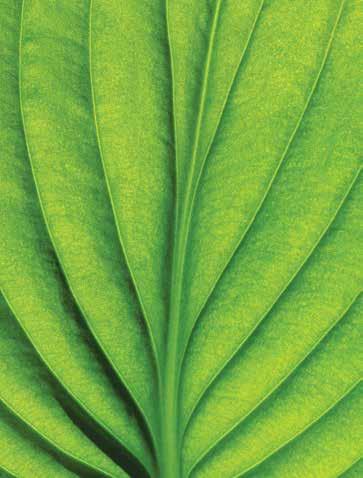
Corps and Meridian Township Parks and Recreation will sponsor a native seed sorting party from 5 to 7 p.m., October 18, at the Meridian Service Center. Parks and Recreation Director
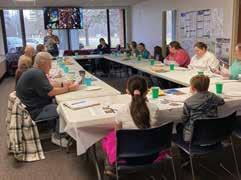
LuAnn Maisner says, “Our hope as we grow this program is to provide homeowners with seed packets to use in their very own yards, spreading local genetic diversity of important native species. The more local a seed is, the better it is for pollinators. We will continue to sow the seeds of hope for a bright future of native plant conservation.”
The Meridian Conservation Corps is devoted to increasing community involvement in parks and preserving and growing awareness of volunteer opportunities involving the care and conservation of Meridian Township’s local green spaces. These seeds will be used to help increase and spread the biodiversity of native plants within the township.
Location: 2100 Gaylord C. Smith Court, Haslett. To register (requested), call 517-853-4614. For more information, visit Tinyurl.com/ SeedSortingParty.

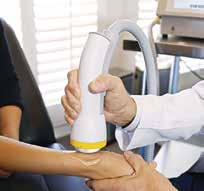
East Lansing Hot Yoga is celebrating 12 years in business. They capture the spirit of yoga, fusion classes and strength training while making it engaging, challenging, fun and accessible.
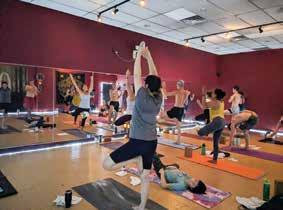
Owner Patty Sutherland says, “I opened East Lansing Hot Yoga in the fall of 2011, weary of driving 60 miles for my hot yoga fix, and hopeful the Lansing community would embrace its first studio dedicated to practicing in a hot room. We believe that yoga is what you make it. Our instructors pull from a variety of modern and traditional yoga, mindfulness, cardiovascular conditioning and plyometrics to design sequences providing you with the strength, reflection and acceptance you need to face the day ahead.”
Location: 924 Trowbridge Rd., East Lansing. For more information, call 517-333-9642, email Patty@EastLansingHotYoga.com or visit mihotyoga.com.

If you have arthritis, diabetes, kidney problem, fatty liver, psoriasis, Obesity, Low immune system, Anxiety Our center is right place for you!
7•10•14 DAY ALL-INCLUSIVE HOLISTIC PACKAGES
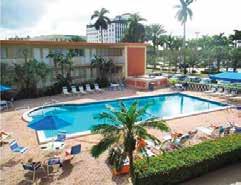
Holistic Package includes:
n Comfortable rooms near the ocean
n Low carb diet food (lunch, dinner)
n Oxygen cocktail, Green cocktail
n Yoga classes
n 4 treatments a day
n Transportation From airport
We work with each individual to find the right treatment. We are with you every step of the way as you improve your health!
Treatments we are offering:
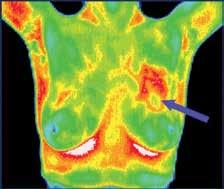

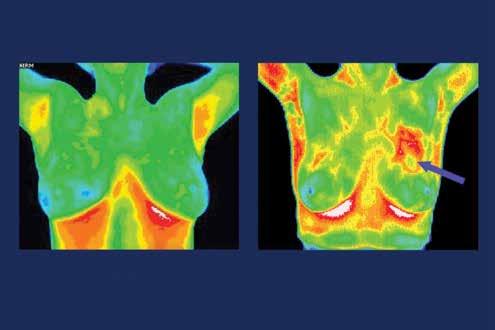
Wycoff Wellness offers unique options including thermal breast imaging (thermography), high-dose intravenous vitamin C infusions, ultraviolet blood irradiation plus ozone infusions, detoxification, intravenous EDTA chelation, far-infrared sauna. colon hydrotherapy, unique supplements and more. They offer Galleri blood testing which can provide the earliest detection possible for 50-plus common types of cancer.
John O. Wycoff, DO, founder and CEO of Wycoff Wellness, says, “Integrative diagnostic and treatment measures for breast health and disease offer options with fewer side effects than conventional therapies.” Wycoff Wellness is the area’s leading
medical practice with unique integrative and functional approaches to many health issues.

Wycoff Wellness provides unique and customized solutions for chronic health issues. They are on the cutting edge of innovative therapies for breast health and many other chronic conditions. Every patient is first evaluated by Wycoff, and an individualized treatment plan is developed specific to their individual needs.
John O. Wycoff, DOWycoff Wellness is located at 1226 Michigan Ave., in East Lansing. For appointments, ordering and more information, call 517-333-7270 or 800-471-0255 or visit WycoffWellness.com. See ad page 3.
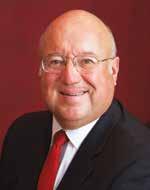
A therogram detects abnormal heat patterns which happen even before a mass develops
What could the recent train derailment in Palestine, Ohio, have to do with your floors? Well, here at Chelsea Plank, we saw the connection right away. For years, as hardwood floors have fallen out of favor and vinyl has been regarded as the more “affordable” flooring product, we have stood by our 3/4” solid wood floors as the long-term best choice for your family, home, and wallet.

What most consumers may not realize about the choice of vinyl, is that vinyl tile or plank (LVT or LVP), all contain some degree of polyvinyl chloride or PVC. PVC is one of the most environmentally hazardous consumer materials produced. PVC is made with large quantities of toxic organochlorines such as dioxins and phthalates and releases them into indoor and outdoor environments. Both chemicals are bio-accumulative and toxic to humans. They are also considered forever chemicals because they are persistent and almost never break down. Their production and ultimate incineration in landfills generate some of the most hazardous pollutants known. Because vinyl flooring is designed with the latest trends in mind, it is often disposed of more frequent-
ly. Hardwood flooring can be refinished many times and is still in homes long after trends have come and gone, while LVP/ LVT sits in landfills. As a sustainable and natural substance, wood is an environmentally friendly choice that helps to insulate the home and lower energy bills. Trees are a natural re-source that use the sun for energy. “During their growth cycle, trees take in carbon dioxide, releasing oxygen and using the carbon to grow,” says Tom Inman, president of Appalachian Hardwood Manufacturers, Inc., “but what many people don’t know is that even when trees are harvested, they continue to store carbon in the products made using them. So, your real wood floors, continue to store carbon during their entire service life. And you can feel it; about half their weight is stored carbon.” In fact, Banks Hardwoods (Michigan) says, “Our Forests are now regenerating 2 times faster than they are harvesting.”
Your initial investment in real wood, pays off for you, the environment, and future generations. The vinyl industry’s marketing strategy touts lower costs and easier availability, but the pandemic shed some light on their supply chain issues. Waiting for products from overseas takes
longer and can cost more for the manufacturer and end user. “China is the world’s largest producer of PVC,” according to a recent article by Ken Ryan, regarding Customs and Border protection (CPB). The CPB recently added polyvinyl chloride to its Ughur Forced Labor Prevention Act (UFLPA). That means products are being detained at the border and that will certainly drive-up costs.
Of the many false narratives being generated by the vinyl industry, the affordability, availability and environmental factors cannot be ignored. Simply put, you can’t beat real American hardwood.
Check out this extremely educational article from the National Wood Flooring Association - https://hardwoodfloorsmag. com/2023/03/02/hardwood-industry-leaders-come-together-to-educate-on-consumer-safety-and-the-environment/
Frame Industries, Inc., the manufacturer of Chelsea Plank Flooring, serving all of Michigan’s lower and upper peninsulas, was established in Chelsea, Michigan, in 1993. For more information, to see samples or to place orders call 734-433-1023 or visit ChelseaPlank.com. See ad back cover.




Face masks are used to reduce the transmission of airborne diseases. Nevertheless, for certain people, extended use of an N95 mask may be problematic, and that is what Chinese researchers set out to study in a randomized clinical trial published this year in JAMA Network Open.

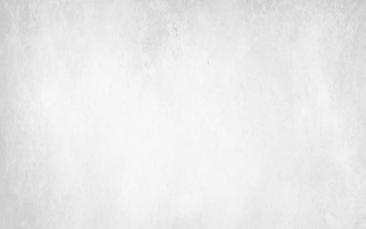
For 14 hours in a controlled setting, 30 healthy participants were randomly assigned to receive various interventions with and without the N95 mask, including two 30-minute, light-exercise sessions. Biometric measurements and blood samples were taken before, during and after each testing period.
The scientists found that wearing an N95 mask resulted in reduced respiration rate and oxygen saturation within one hour, and an elevated heart rate two hours later, which continued until the mask was taken off. During exercise, mask-induced cardiopulmonary stress was further exacerbated, as heart rate and blood pressure increased, and respiration rate and oxygen saturation decreased. Energy expenditure and fat oxidation were elevated.
After the 14-hour masked period, blood pH markers decreased, which may cause drowsiness, stupor and even coma in extreme cases, according to the National Institutes of Health. The study authors note that chronic cardiopulmonary stress may increase cardiovascular diseases and overall mortality in elderly individuals, children and those with cardiopulmonary diseases. Further
investigation is needed to explore the effects of different masks on various populations.



New methods for cultivating healthy hair growth have been gaining traction amongst young people on social media platforms, including hair tapping, a technique popularized in Korean and Japanese hair spas. According to hair-care experts, hair tapping is similar to a scalp massage and involves gentle drumming movements along the scalp with the fingers. Hair-tapping techniques draw from acupuncture, the practice of releasing energy by accessing certain landmarks in the body.
Like other kinds of scalp massages, hair tapping may relieve scalp tension, stimulate blood flow and improve lymphatic drainage. A Japanese study found that four-minute daily scalp massages over a 24-week period increased hair thickness by changing the expression of human dermal papilla cells in tissue under the skin. And a 2019 self-assessment survey found scalp massages improved hair growth for individuals with hair loss.
The consumption of fermented products is on the rise as drinks like kombucha and kefir have become popular. They are a source of tryptophan, an amino acid critical to producing serotonin, the brain chemical that influences mood, and may

also contain neurotransmitters in their raw form. Research has shown that eating fermented foods may have long- and short-term impacts on brain function, such as reducing
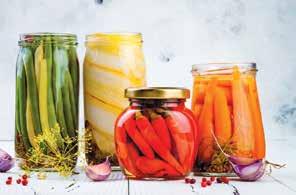
Led by researchers at University College Cork, in Ireland, a new large study has begun to compare 200 fermented foods from around the world to pinpoint which ones are the most beneficial for brain health. Although still in its initial stages, preliminary results have already revealed some surprises. Almost all of the fermented foods display the potential to improve gut and brain health. While more research is needed, sugar- and vegetable-based fermented foods are likely to top the list, according to the lead researcher.
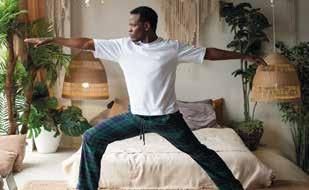
According to the American Cancer Society, about one man in eight will be diagnosed with prostate cancer during his lifetime, with six in 10 of these cases in men 65 years and older. Non-Hispanic Black men have a 75 percent higher risk and are twice as likely to die from prostate cancer than white men, with genetics accounting for some of these disparities.
Researchers from The University of Texas Health Sciences Center at San Antonio evaluated the impact of yoga on quality of life, as well as on immune and inflammatory responses. Published in the JournalofUrology, the study included 30 men with cancer that were scheduled for radical prostate removal. Half of the patients performed 60 minutes of yoga twice a week for six weeks before surgery and for three to six weeks after surgery. The other patients received standard care.
The group that performed yoga reported higher quality-of-life scores, including reduced fatigue and improvements in physical, sexual, functional and social well-being. Based on blood samples, the scientists also found that yoga promoted an anti-tumor immune response and reduced inflammatory cytokine levels.


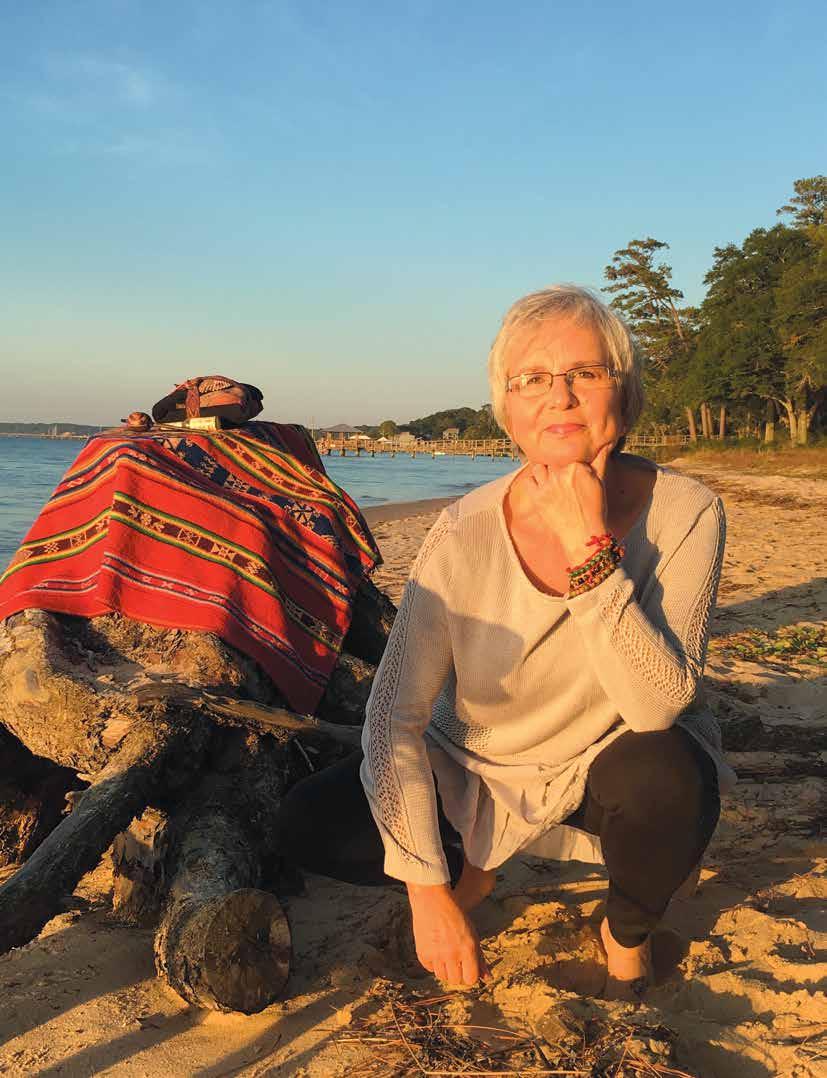
With time-tested wisdom and natural roots, traditional and Indigenous medicine has been an integral resource for centuries in communities around the world. According to the World Health Organization, 88 percent of all countries are estimated to use traditional medicine, such as herbal remedies, acupuncture and shamanism. The contribution of these practices is increasingly being recognized by Western medicine, especially in collaboration with integrative, holistic and regenerative medicine. The pandemic prompted renewed interest in traditional treatments, and incorporating them into wellness and healing modalities is easier and more valuable than ever.
Herbalist and spiritual coach Lucretia VanDyke integrates rituals, plant-spirit meditation, holistic food and ancestor reverence into her practice. An expert on Southern folk healing, VanDyke notes in her book, African American Herbalism, that Indigenous practices were never lost, but people had to go underground for fear of persecution.
“Herbal and sacred ceremonial practices of enslaved people of African descent were highly regulated or banned by the United States government in an effort to control the people most affected by colonization,” she explains. “In the mid-18th century, Virginia and South Carolina made it a capital offense to practice herbalism, resulting in harsh punishment or even execution if found guilty. Additionally, in 1883, the U.S. Department of Interior came up with the Code of Indian Offenses, which implemented laws that applied only to Native people until 1978. They were punished for dances and feasts by imprisonment or withholding food rations for up to 30 days.”
Noting a resurgence of these once-forbidden practices, VanDyke adds, “Today, I see people trying to branch out on their spiritual journey and seeking sources outside their Christian upbringing to answer questions within themselves with practices like herbalism and African traditional religion coming more into the mainstream.”
Linda M. Conroy, MSS, MLSP, is an educator, herbalist and community organizer who dedicates her life to connecting with the green world. She is the founder of two annual gatherings: the Midwest Women’s Herbal Conference and the Mycelium Mysteries Women’s Mushroom Conference. She also provides herbal education, workshops and individual consultations through her Wisconsin-based business, Moonwise Herbs.
“Herbalism is a practice where people connect and work with plants for healing and nourishment,” she says. “Plants, herbs and mushrooms have been around long before we have and provide an innate connection to the earth. Everyone has ancestors that grew and foraged for their own food, and we remember that in our being. It’s a different experience from buying a plant or pill from the store shelf.”
Misconceptions about herbalism are common in America, Conroy asserts. “In other countries such as Cuba, Germany and China, conventionally trained physicians still learn about more than 50 herbs in their training, but the United States all but
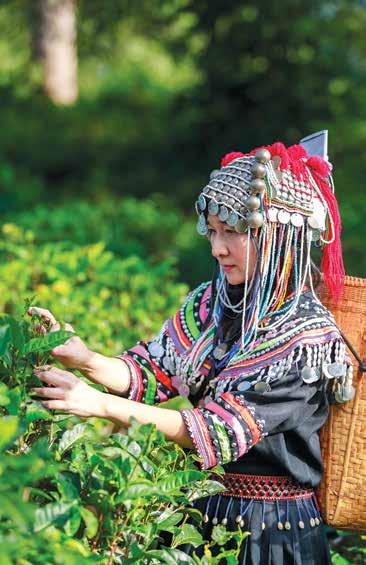
abandoned herbalism after the development of antibiotics and pharmaceuticals,” she explains. “The pandemic has helped spawn a resurgence of interest, with people increasingly disappointed by Western medicine and turning to herbs for respiratory support, stress management and other conditions.”
Conroy stresses that working with herbs is both an art and a science. Learning their unique properties is key. “In order to be truly effective, it’s imperative that people know how to properly choose and use the correct herb for each situation. This includes being mindful of the dosage, method of delivery and sourcing. Herbs are much safer than most things out there, and with the right assessment skills, they can be truly transformative,” she says.
Another recommendation is to establish a wellness routine that incorporates herbs as maintenance to remind the body of their healing value. “Herbs are not drugs but can work in synergy with them. Many common ingredients can be used every day, such as a stinging nettle infusion to nourish the kidneys and lungs, and oats to fortify the nervous system,” Conroy says. “Acquiring our herbs and foods from local sources also strengthens our connection to the plants. Most things we need, such as garlic, cabbage, eggs and raw honey, we can find in our own garden, from neighbors or at a farmers market.”
Billie Topa Tate’, a member of the Mescalero Apache tribe, is founder of MSI Wellness, in Evanston, Illinois, and author of the upcoming book, Spirit Guide Invocations: Seeking Wisdom from Sacred Helpers. Dedicated to creating a sacred space one person at a time through her Indigenous teachings, she is a mentor, teacher and healer. Her work has been shared by several universities and publications.
Although Indigenous healing practices do not have scientific studies to support their efficacy, they do have the observational and traditional support of her people, Topa Tate’ says. “The Apache learned medicinal properties from the plants and honored the position of being stewards of the land,” she asserts. “We learned from our virtuous elders that plants provide us with medicine and food, as well as spiritual qualities, such as smudging, essential oils and incense, which help to cleanse the body, mind and spirit.”
According to Topa Tate’, a shamanic journey is a visit to the energy world and can lead someone to insightful wisdom regarding their life’s purpose. “The spirit world provides a release of the thoughts that limit us and brings us into a realm where we can be guided by higher thought,” she explains. “Visiting the spirit world with proper guidance allows us to access the worlds of healing, wisdom, angels, the past, the future and even the symbolic energies of our present lives through our mind. Another way to find this release is to understand that words are energy carriers and can provide our mind, body and spirit with a source of enlightenment. We do this through our drumming songs and ceremonies, but also by becoming more aware and harnessing the power of words as medicine in everyday actions.”
Energy work can help us reconnect with that part of ourselves that facilitates healing, says Topa Tate’. “I recommend beginning
the day with a five-minute morning ceremony that gives thanks to the creator for a beautiful day and invokes our helpers to offer assistance with particular projects. As a healer, it is important to teach people how to manage their stress with more productive platforms, such as meditation, nature walks and seeking out their life’s purpose. There is a misconception that only Native people can do this energy work, but we are all one family and can learn how to integrate the natural wellness that the Native people have used for centuries,” she explains.

Traditional Chinese Medicine (TCM) is based on the philosophy, experiments and experiences indigenous to Chinese culture. It has been practiced for more than 2,500 years and is used for health maintenance as well as the prevention, diagnosis and treatment of physical and mental illness. According to Dr. Heming Zhu, NCCAOM, a board-certified acupuncturist and Chinese herbalist, author, educator, scientist and founder of Harmony Acupuncture and Chinese Medicine, in Maryland, the basis of TCM lies in the belief that the human body is a holistic system deeply connected to the universe.
“TCM is influenced by the flow of vital energy called qi. To restore the balance of qi and gain the harmony of life’s paired

Traditional Chinese Medicine has been practiced for more than 2,500 years and is used for health maintenance as well as the prevention, diagnosis and treatment of physical and mental illness.
aspects known as yin and yang, TCM practitioners use various techniques, including acupuncture, moxibustion [burning herbs at acupressure points], herbal medicine, massage, qigong and dietary therapy,” Zhu explains.
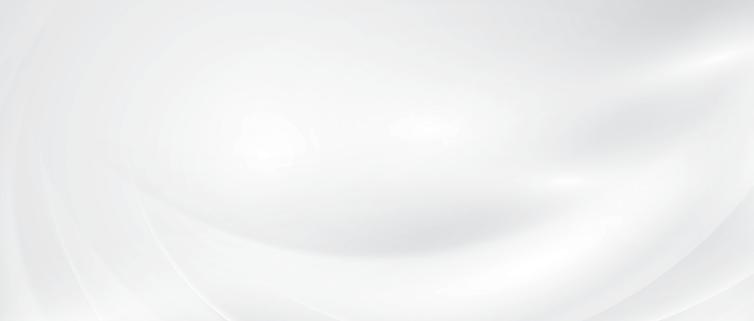
Zhu says that TCM modalities fit into either a physical therapy or chemical therapy category and can be introduced for regular maintenance. “Acupuncture is commonly used for addressing fatigue, stress, pain, gastrointestinal issues, arthritis and improving overall well-being. Cupping is beneficial for relieving stress and muscle soreness. Tui-na, a form of therapeutic massage, is used for musculoskeletal disorders, digestive issues, pain and more. Gua sha
helps manage stress and alleviate muscle tension and pain. Moxibustion can boost energy, improve digestion and address cold-related ailments. Qigong and tai chi are gentle, mind-body exercises that reduce stress and promote relaxation and overall mental well-being. Chemical therapy includes herbal medicine and dietary therapy to emphasize the connection between food and health,” he says.
TCM can be incorporated into an established wellness routine, and Zhu offers a few guidelines to ensure the best results. “People should seek education on the basic principles of TCM and be intentional not to judge it by Western medicine standards. They should find a licensed and experienced TCM practitioner and keep an open mind in initial consultations. Simple TCM practices, such as mindful breathing, gentle stretching or drinking herbal teas, can be incorporated into a daily wellness routine, and lifestyle changes, such as sleep routines and stress management, are part of the healing process,” Zhu says.



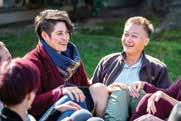
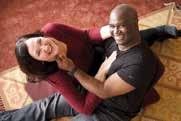

“There are multiple factors to illness, but often our emotions and trauma, either intergenerational or personal, are at the core,” VanDyke says. “Creating ceremonies based on the old ways gives you the strength to show up for yourself and makes it a little easier to move through the experience. Grief is a multilayer process, and it takes a holistic approach to co-create a path to a new normal. Our emotions are like invisible chains that bind us in a trauma loop, and having support for that is important. Nurturing the spirit is one thing that Western medicine does not talk about. I find that laughter, joy, pleasure and feeding the child-like spirit in us helps with this when life gets heavy. Ask yourself how you prioritize joy, and create your own rituals that center traditions while honoring your true self.”

 by Sandra Yeyati
by Sandra Yeyati
Sophie Haruna Klimcak is the co-founder and program director of Wild Awake, a nonprofit in San Francisco. Drawing from her Japanese and Eastern European roots, she designs immersive, nature-based learning experiences that nurture deep caring for people and the planet. Klimcak holds a master’s degree in education from the Harvard University Graduate School of Education and bachelor’s degrees in philosophy, neuroscience and psychology from Washington University, in St. Louis.
Whether in an after-school setting with children or an outdoor adventure among adults, she and her team of naturalists, artists and healing practitioners invite people to mindfully gaze at the stars, invigorate the senses with ocean sound-baths, experience healing and community in a song circle, build empathy and connection through storytelling, and express creativity by painting with botanical pigments.
In the summer of 2020, my co-founder Shasha Du and I took a weeklong trip to Joshua Tree National Park. Every night we experienced this feeling of awe and wonder and reverence as we stared up at this stunning night-sky portal of infinite space and blazing stars. On the last night, we brought binoculars and stayed up to see the comet NEOWISE. At 4 a.m., it ap-
peared on the horizon—this icy rock moving toward the sun and releasing all these gases behind it in a glorious paintbrush streak—and we literally screamed and held each other because we had never seen anything like that before. As educators, we decided that we wanted to keep those feelings alive in our hearts, and design for awe and wonder in learning.
You don’t have to travel to places like Joshua Tree or see a comet to experience wonder and awe. With the right amount of mindfulness and attention, everything is worthy of such appreciation—our backyards, our houses, everything. Feeling a sense of wonder requires us to take time to appreciate the textures of something in its entirety and realize where it might have been sourced from and how it’s supporting us and we’re supporting it—remembering that we’re interconnected. We offer local experiences to help people see that magic exists where they live.
Learning is super-creative, constructive, collaborative and social. The best kind of learning is when you’re following a thread of your own intuition and asking questions that are joyful for you. They’re not questions someone told you to ask. You’re building your own worlds by a process of inquiry. I think wakefulness comes from bringing that attention to whatever it is that you want to go deeper into.
One of our most experiential offerings was a wildflower therapy workshop, which brought people in community to see the superblooms in the Bay Area. To make this a wonder-based experience, I created this little booklet for a mindfulness walk, inviting folks to choose one flower to develop a relationship with over the course of an hour and a half.
The booklet had multisensory prompts to deepen that relationship, and I asked them to record a conversation with their flower. When do people stare at a flower that long, right? But it does wonders, helping you move a little bit slower in the world.
The next time they walk by flowers, they’ll notice them in a different way because they took intentional time to
develop a relationship to local flora and to their own joy and wonder. Little steps like these can be radical in developing a love for what we may lose if we don’t protect and care for this world.
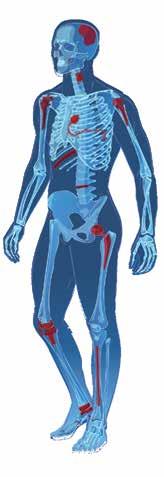



Living in San Francisco with the bay surrounding us, we are always in a relationship with the ocean. It cools the planet, making it livable for us; it’s an amazing place to play and enjoy water sports; and it nourishes us through seafood. So, we designed a program that takes folks out to forage for seaweed.
It’s not about filling our buckets with as much seaweed as possible, but rather bringing mindfulness to the experience. We marvel at the diversity of seaweed; you can see dozens of different kinds along our shoreline. People are curious about what makes seaweed a certain color or how it nourishes us. We learn how to harvest seaweed from rock in a way that it can regenerate and grow more seaweed. We make an offering to the ocean, saying, “Thank you,” remembering our mutual reciprocity.
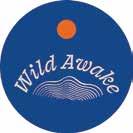

One of the most accessible ways of connecting to nature is by connecting to your own body. Putting one hand on your belly and one hand on your heart and noticing your breath can really help you drop into that space of deep calm and deep knowing. If you can, find your local dark sky and go out to see the stars. Look at the moon. Notice the way planets and stars move through the sky. Or, notice a leaf or a flower and be in a relationship with it by noticing it over time, returning to it and seeing how it has changed and how you’re changing inside, too.

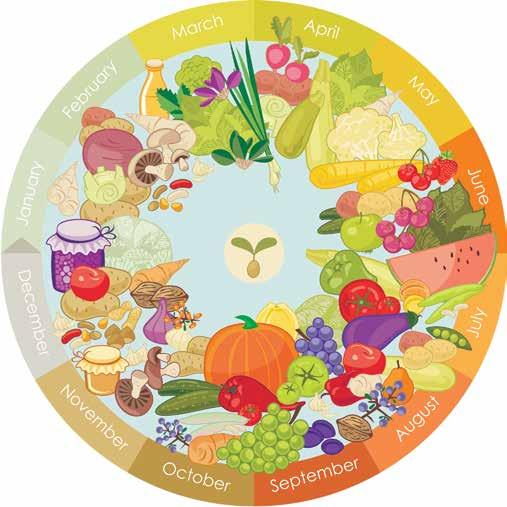
So much has evolved in the 100 years since Japanese educator George Ohsawa created the macrobiotic diet. For one thing, the recipes have become more flexible, empowering people to save time and use ingredients that they love. “The modern macrobiotic diet is about much more than tofu, seaweed and miso,” says chef and author Christina Pirello, the Emmy Award-winning host of Christina Cooks, on PBS seasonal, whole, unprocessed food cooked in accordance with each person’s condition and lifestyle.”
“In the beginning, there was rigidity that didn’t give you the freedom to say, ‘I don’t want to eat adzuki beans again,’” Pirello says. “Variety is key. You can’t just eat kale and drink smoothies and hope for the best. You have to get balanced nutrition with enough protein, fats and carbohydrates.”
According to Pirello, “What we eat determines how we move through the world. Are we comfortable or uncomfortable? In Chinese medicine, we are either in a state of ease or dis-ease, which became the word disease, but in Chinese medicine, it really means uncomfortable. What do you do to get back into that state of ease, or balance? That’s really what macrobiotics is about;
how do you rebalance the body—the organs—to be comfortable?”
Eating in accordance with the natural order—with the seasons—is an essential concept of the macrobiotic diet and includes fall, winter, spring, summer and a fifth season, “late harvest.” The idea is to follow our intuition, Pirello advises: “If you walk into the supermarket in November, you’re not immediately attracted to cherry tomatoes and strawberries, but the winter squashes, pumpkins and parsnips call your name. Macrobiotics allows us to understand that—even here in the United States where foods are so widely available that you can have strawberries at Christmas.”
Her recipe for Winter Squash Risotto, which is featured in her new cookbook, VegEdibles, is just one example of the delicious macrobiotic dishes she has developed. “This risotto is perfect for cooler weather, when we need to keep energy in our middle organs so we are warm and cozy, centered and balanced,” Pirello says. “Come winter and fall, we want foods that are going to help the body hold onto heat. Squash, pumpkin, turnips and rutabaga are going to help relax the body and the middle organs and help us stay grounded, centered and warm. The risotto is cooked really
long, so there’s a lot of warming energy that will help you in cold weather.”
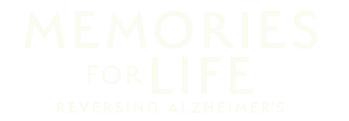

“There has to be a period when the body transitions from the heat of summer into the cool of the fall,” says Chicago area-based macrobiotic counselor Karla Walter. “That’s when we have those beautiful orange foods starting to come out, and the squashes start arriving. We have this really lovely, sweet time of the year that actually nourishes the body and helps the immune system ramp up and get ready for colder weather.”
Walter recommends the macrobiotic diet for finding calmness and rhythm. “When we eat healthy foods that sustain us, our goals come to the surface where we can see them a lot clearer. People don’t know their potential until they start to feel good about themselves,” she says.

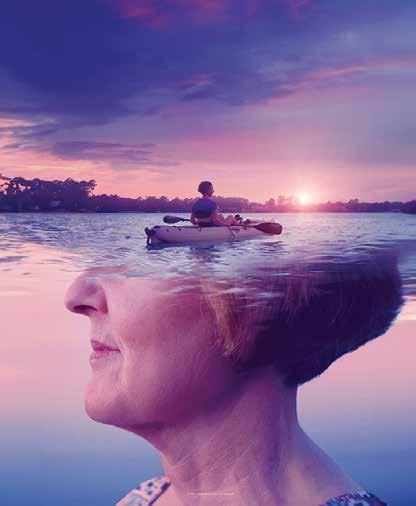

Lisa Books-Williams, a plant-based chef, educator and therapist in the San Francisco area, encourages people to find their own plant-based path. “I found my answer at the end of a fork, instead of in a bottle of pills,” she says. “The most loving thing I ever did
for myself started with changing my food choices. Sure, it would be more delicious to be eating a pizza, but eating a salad with beans and rice is how I love myself.”
Books-Williams believes that taking the extra time that is required to follow a plant-based lifestyle is worthwhile. “We can eat well inexpensively if we are willing to take an extra couple of hours each week to chop vegetables. We are worth the time it takes to batch-cook and freeze beans in single servings so we have them when we need them. Each of us has to be committed to our own well-being. No one is going to do it for us.”
While much has changed since Ohsawa introduced the macrobiotic diet, Pirello still adheres to its three core ingredients. “I still eat rice, seaweed and miso soup,” she says. “Not as much as I used to, but I still do, because miso is the greatest probiotic on the planet, followed by kimchi. Those are the greatest macrobiotics we could ever eat in our lives, and both are delicious.”
Veronica Hinke is a food historian and the author of The Last Night on the Titanic: Unsinkable Drinking, Dining and Style and Titanic: The Official Cookbook. Learn more at FoodStringer.com.
“I found my answer at the end of a fork, instead of in a bottle of pills.”






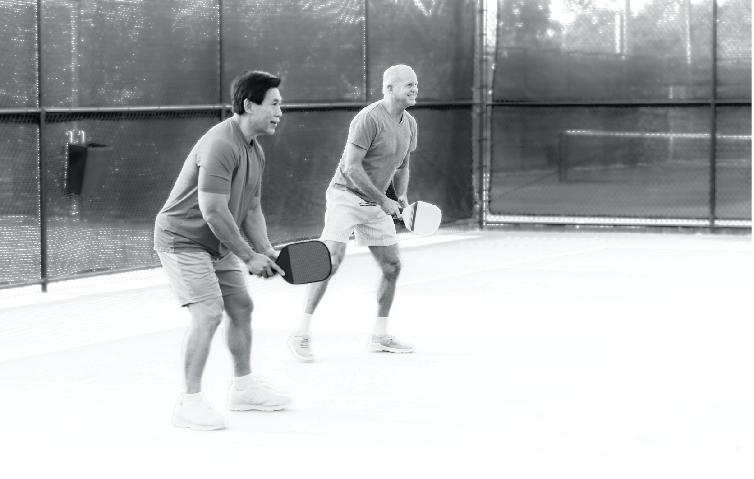
RISOTTO
YIELD: 4-6 SERVINGS
FOR THE BROTH:
¼ red onion, diced
½ carrot, diced
¼ cup diced winter squash
Splash of white wine or mirin
3 cups spring or filtered water
FOR THE RISOTTO:
2 Tbsp extra-virgin olive oil
½ red onion, finely diced
¼ tsp sea salt
Splash of white wine or mirin
½ cup carnaroli or Arborio rice
¼ winter squash, unpeeled and finely diced
4-5 sprigs fresh basil, leaves removed, hand-shredded
To make the broth, combine all of the listed ingredients in a large saucepan over low heat and simmer for 30 minutes before making
the risotto. This can be done the day before.
For the risotto, place the olive oil in a deep skillet along with the onion over medium heat. When the onion begins to sizzle, add a pinch of salt and cook, stirring until translucent. Add the rice and a generous splash of wine, and cook, stirring until the wine is absorbed. Add ¼ cup broth and cook, stirring frequently, until the broth is absorbed. Add another ¼ cup of broth and repeat the process. Stir in half of the diced squash and cook, stirring.
In a small saucepan over medium heat, place the remaining squash with enough water to cover halfway. Add a pinch of salt. Cook over medium heat until the squash is soft, about 20 minutes.
Continue adding the remaining broth to the rice—¼ cup at a time—and stirring until the rice is tender but al dente, about 25 minutes.
Take the remaining squash and use an emulsion blender or a food processor to purée until smooth. Stir the puréed squash into the cooked risotto. Season it lightly with salt and cook over low heat
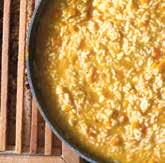
until the squash is absorbed into the rice.
Serve immediately, garnished with fresh basil.
Recipe courtesy of Christina Pirello.
BEETROOT AND ORANGE MISO SOUP
YIELD: 4-6 SERVINGS
4 medium beets, washed and with stems trimmed to about 1 inch
2 tsp ginger, finely chopped
2 Tbsp green onions, finely chopped
2 cups water or vegetable stock
1¼ cup orange juice






2 Tbsp raspberry vinegar
1 Tbsp barley (mugi) miso
½ cup chopped chives or green onions
Place the beetroot in a large saucepan, cover with water and bring to a boil over high heat. Reduce the heat and simmer until tender,
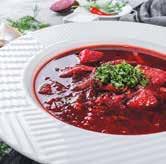
about 40 minutes. Drain the beets.
Next, run the beets under cold water and peel them. The skin and stalks should fall off easily. Chop the beets into ½-inch cubes.
Reserve ⅓ cup chopped beets and set aside.
In a large saucepan over medium-high heat, combine the remaining beets, ginger, green onions, water or vegetable stock plus one extra cup of water. Bring to a boil, then reduce heat and simmer for 10 minutes.
Remove from heat and stir in orange juice.
Purée soup in small batches in a blender until smooth.
Remove a small portion of the soup into a bowl and dissolve the miso. Add miso back into the soup and stir through. Add the vinegar and stir through.
Garnish with the chives or green onions.
Recipe courtesy of Karla Walter.
$89
Includes Four 16 oz. juices daily*
That’s less than $30 a day
Breakfast: The Kickstarter
Lunch: The Miracle Cure
Dinner: Green Machine

Bedtime: The Refresher
Kickstarter*
Organic apple, organic ginger, organic lemon, organic cayenne pepper


Refresher*
Organic pineapple, organic cucumber, organic celery, organic ginger, organic lemon
Green Machine*
Organic celery, organic cucumber, organic green pepper, organic kale, organic parsley, organic spinach
Miracle Cure*
Organic apple, organic red beet, organic carrot, organic kale, organic lemon, ground turmeric


It takes a special kind of artist to create a work of art out of discarded items.

These imaginative, multimedia visionaries see beauty and purpose in the most mundane materials, including paper, computer parts, bits of plastic, leftover fabrics, used tires and random game pieces. Their thought-provoking, surprising works reduce waste that would otherwise populate landfills and prove that trash can indeed become treasure.
Motivated by a desire to educate and inspire, many upcycle artists often interweave a message of environmental consciousness into their artwork, thus spreading awareness about issues or making social commentary. Plastics found along the beach
may become a collage of a thriving sea turtle, for example. Old rusty metal parts may be transformed into a steampunk clock face or a modern hanging sculpture that spins in the wind.
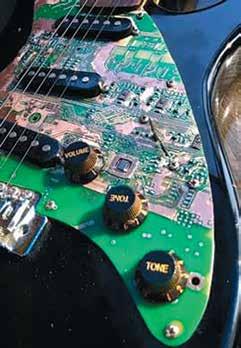
Artist and interior designer Noelle Turco, of Lancaster, Pennsylvania, comes from a legacy of artists that found ways to be creative with things that were left behind.
“Repurposed and upcycled art is inventive and gives a second or third life to everything from packing materials and wood to bottle caps and string,” she explains.
“It’s one of my favorite things to do and
challenges me mentally because it makes me think about how I am going to take the treasures that I have found—the bits, pieces and even words on paper—and make them into art.”
Cesar Aguilera, art curator at the Sidney & Berne Davis Art Center, in Fort Myers, Florida, makes art to create consciousness about what humans use and consume. “My personal artwork and the exhibitions I design encourage others to reconsider how much we throw away,” he says. “There is not another species on Earth that creates the amount of waste that does not naturally decompose. All that we create has an impact.”
Jen Hardwick, a mixed-media artist who
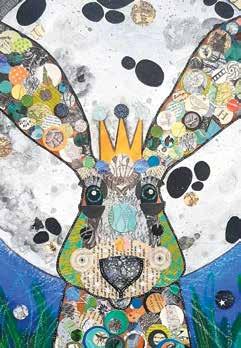
resides in Longview, Washington, loves working with vintage game pieces, toys, wood and metal. “When I moved to Seattle in the late 80s, I started going to markets, junk stores and donation centers, and I would collect all these little ‘treasures’. A lot of these materials would end up in a landfill, so I hope that by using them in my art pieces, it’s helping the environment in a small way.”
Artist Gracie Berry, who also lives in Lancaster, loves the challenge and inspiration that creating upcycled and repurposed art brings. “It allows me to use my creativity to rename things from my perspective,” she explains. “While each of my creations has their own stories and set of rules, a common message is that my art is purposeful and needs to be here.”
Aguilera, Berry, Hardwick and Turco concur that when making repurposed art, the creative process unfolds in a messy, nonlinear way. Sometimes they begin with an idea in mind, but inspiration occurs while working with the pieces, so the work often takes a different direction. Canvas, wood, metal and fabric become foundations for intricate layers of found items placed, sewn and nestled into nooks and crannies, like puzzle pieces fitting oddly together.
“Materials seem to find me way before I ever go looking for them,” Berry shares. “Sometimes the material itself gives me inspiration for my next piece. It’s magical the way it all unfolds. I welcome challenges when it comes to learning techniques that work for specific projects. It’s exciting to find solutions through trial and error, cementing techniques that can be used again.”
Aguilera makes art from discarded computer parts, fabric and furniture. “Technology consumes precious resources but gets discarded as newer inventions become the focus,” he explains. “Showcasing the interior workings of a computer draws attention to hidden beauty. A fresh coat of paint or a design remodel breathes new life into a piece of furniture or clothing.”





“For those just starting out, simple projects can be created using magazines, cardboard, yarn and glue,” explains Turco. “Visit secondhand and thrift shops. Often, these stores are nonprofits, so by shopping there, we are not only keeping stuff out of landfills, but also supporting our local communities.”
“Choose materials that inspire you. Pieces can be as simple or detailed as you want them to be, but most importantly, have fun,” enthuses Hardwick. “I love all the things I collect individually, but putting them together to create a robot or a bug or an animal opens up a whole new world for me.”
Look for beauty in unexpected places. Berry suggests that repurposing upcycled objects is not only more sustainable for the planet, it also allows creativity to be accessed anywhere. “When we think outside the box, we can create change through art,” believes Aguilera.
Gisele Rinaldi is a frequent contributor to Natural Awakenings publications.

ern Chinese medical practice and is now a popular mind-body wellness technique in the United States, as well. An estimated 2.9 million U.S. adults practiced either tai chi, qigong or both in 2012.”
Qigong is more than a modern wellness practice. It’s a 5,000-yearold Chinese healing art steeped in tradition. At its core, qigong revolves around the concept of qi (pronounced “chee”), considered to be the life-force energy that permeates the universe. Like love, qi can act as a potent healing agent, restoring inner peace, balance and harmony. Gong refers to the dedication and effort invested in mastering this skill, a journey marked by patience and repetition. Qigong is a moving, meditative practice aimed at harmonizing internal energies, and it is related to tai chi, which originated as a martial art.
The practice of qigong involves breath work, movement, mindfulness and stretching. It is performed with intention, yet
emptiness (wuji), enabling practitioners to cultivate a stronger, deeper mind-bodyspirit connection that allows for heightened stillness, clarity, vitality, awareness and sense of self. It has been clinically documented to alleviate stress, enhance energy levels, improve physical fitness and promote cardiopulmonary and immune function.
In a 2012 study published in the Journal of Alzheimer’s Disease, researchers found that tai chi could enhance brain size and improve neuropsychological measures in elderly individuals, potentially delaying the onset of Alzheimer’s. A systematic review of 11 studies involving 1,061 seniors with mild cognitive impairment suggested that tai chi training could be effective in improving cognitive function, including memory, learning, mental speed and attention. And, a 10-week study by Brown University researchers reported that cancer patients that practiced qigong displayed clinically significant improvements in fatigue.
“Knowing yourself is the real practice,” says David Stokes Hone, a naturopathic doctor, medical qigong master and founder of the
A 2020 study published in Frontiers in Medicine reported that qigong improved balance and coordination in older adults. In presenting their scientific approach and rationale, the researchers noted, “Qigong is an integral part of both ancient and mod-
Elements of Life Institute. “As practitioners, all we’re doing is reminding people of the divine connection that’s inside of them. Qigong helps clear blockages and move the stuck qi out. Just doing the practices, we allow our bodies to heal through the move-
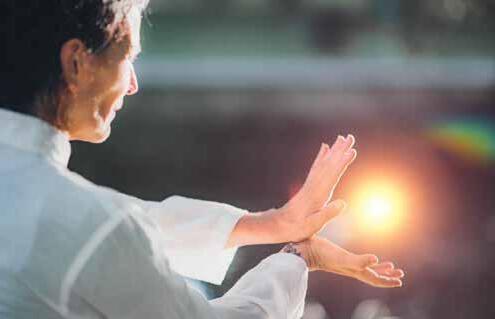
Qigong cultivates a stronger, deeper mind-body-spirit connection that allows for heightened stillness, clarity, vitality, awareness and sense of self.
ment that helps us have the faith to heal. The blocks and addictions melt into the light formed by the exercises.”
According to Hone, the profound transformations achieved through qigong can range from the dramatic, such as restoring sensation in a paraplegic’s legs, to the more subtle, like the emergence of a smile. He recalls the story of a young woman entrenched in addiction who managed to turn her life around after embracing the practice.
Kevin Chen, Ph.D., a qigong master and associate professor at the University of Maryland School of Medicine, introduced qigong to his father with chronic back pain as a way to alleviate his suffering and avoid a recommended surgery.
For beginners, Tai Chi Master Violet Li emphasizes relaxation and mindfulness. “True relaxation is more a state of mind,” she explains. “When we pay attention to our body, the qi will follow.”
Troy Bennett, a doctor of acupuncture and qigong master from Newfoundland, Canada, shares eight principles that he learned from Qigong Grandmaster Effie Chow.
MEDITATE. Whenever a problem arises, meditate and wait for the answer to come. If you come to the conclusion that you can’t fix the problem, then it’s not in your hands, so don’t worry about it.
BE LIKE THE WILLOW TREE. Learn to be flexible in the body, mind and spirit.
BREATHE. The quality of your breath will determine the quality of your life. Breathe like a newborn baby.
CONNECT. Everyone and everything in the universe is connected through qi. Remember the smallest thing you do in life will have an effect on the universe. Always hold the intention of love.
TRAIN FOR SUCCESS. Remember to always help people become the best that they can become.
LEAVE A BLESSING. Whenever you meet someone, always give a blessing. Your kindness can have the most powerful effect on someone’s life and transform them in ways you can only dream of.
EXPERIENCE EIGHT HUGS AND THREE BELLY-ACHING LAUGHS DAILY. Don’t take life so seriously. Learn to laugh and enjoy life.
LIVE . When Dr. Chow was asked, “What happens when you die?” she laughed and said, “I cannot answer that question. There is no such thing as death. There is only life.”
Scientists prove pure copper kills germs in seconds, just by touch, including viruses, bacteria, and fungus. High-power microscopes show germs instantly start dying when copper touches them.
The new studies explain why ancient Greeks, Egyptians and others used copper to fight infections and heal wounds. They didn’t know about germs, but now we do.
The National Institutes of Health, the EPA, and the American Society for Microbiology all vouch for the power of copper to kill germs. It even kills the really bad germs that have become antibiotic resistant CopperZaps® are made of pure copper, shaped to reach bad germs where they lurk in your nose, mouth or skin. The inventor has gone 11 YEARS without even a single cold. Now over 100,000 sold.
Longtime users say they haven’t been sick in years. They have less stress, less medical cost, more time to enjoy life, perhaps even a longer life to enjoy.
People use CopperZaps against: Colds, Flu, Covid

Sinus trouble from germs
Cold sores or fever blisters
Canker sores that get infected
Mold allergy, Warts, Ringworm
Sleep loss due to Congestion
Pink Eye, Styes, Thrush
Infected sores or skin lesions
Cuts or wounds getting infected
Nadia Linda Hole is a medical doctor, qigong master and pioneer in bridging Oriental, Western and energy medicine with Hawaiian-style qigong. She served as a consulting editor for the book Chinese Medical Qigong and contributing author in medical textbooks on complementary medicine.
The all-copper handle is curved and textured for maximum contact with fingers and hands in case you touch things a sick person touched and pick up their germs.
Getting sick after Air Travel
Users say:
“It works! I love it!”
“Is it supposed to work that fast?”
“One of the best presents ever.”
“Sixteen flights and not a sniffle!”
“Cold sores gone!”
“The kids all got sick, but not me.”
“I am shocked! My sinus cleared.”
“Best sleep I’ve had in years!”
Easy to use. Easy to clean. Comes with Directions. EPA tests show tarnish does not reduce copper’s germ-killing power. Never wears out. Use again and again. Made in USA of pure American copper.
90-day Money-back Guarantee. Top BBB rating. Price $79.95. Get $10 off each with code NATA38 See CopperZap.com or call 888-411-6114 toll-free. Live people answer 9-4 Pacific on business days. Statements not evaluated by FDA. Not claimed to diagnose, treat, cure, or prevent any disease.
 by Sheila Julson
by Sheila Julson
For adults, music has the power to instill feelings of joy, relaxation and calmness, or to motivate us when we are exercising or performing a task, but for children, there are added benefits. Whether listening to a live orchestra, engaging in rhythmic games, learning to play an instrument or singing in a choir, musical pursuits have been proven to help with early brain development and teach kids important life skills.

Researchers at the University of Washington Institute for Learning & Brain Sciences discovered that play sessions with music helped 9-month-old babies learn to detect rhythmic patterns, an important skill for both music and speech. According to lead author Christina Zhao, “This means that early, engaging musical experiences can have a more global effect on cognitive skills.”
In a five-year study involving 6- and 7-year-olds, neuroscientists at the University of Southern California Brain and Creativity Institute, in partnership with the Los Angeles Philharmonic, found that music instruction appeared to accelerate brain development in young kids, particularly in the areas of the brain responsible for processing sound, language development, speech perception and reading skills.
“Music learning, such as studying to play a musical instrument or singing in tune, are very complex activities for the brain. They use multiple senses but also require those senses to interact and exchange information in a highly synchronized way,” explains Dr. Anita Collins, founder of Bigger Better Brains and author of The Music Advantage: How Music Helps Your Child Develop, Learn, and Thrive. She asserts that complex musical activities are like full-body workouts for the brain, which sharpen a child’s ability to solve problems and think creatively and divergently. As these skills are mastered, they can be transferred to other types of brain activities.
Collins advises that singing to and with children at a young age can help them gain control of their voices, as well as their speech enunciation and processing, and to hear nuances in sounds. She recommends interacting with the world of sound while outdoors and adds, “Getting a young child to focus their ears onto a particular sound can help train auditory attention, which trains the attention network in general.”
Kids need to listen actively, rather than passively, most of the time, Collins notes. “Passive music listening is hearing music in a mall. Active music listening is focusing our auditory processing on a particular instrument, on the melody line over the bass line or mirroring the rhythmic ostinato of the drum part.”
Silence also plays an important role in early development. “The biggest mistake is not thinking about a child’s auditory environment and always having the TV on or having a highly
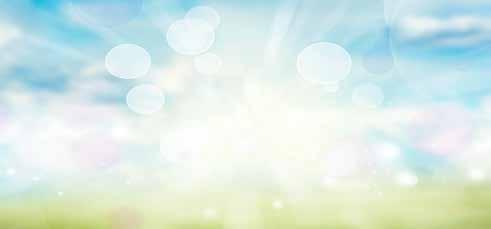
stimulating auditory environment all the time. Children need variety in their food, and sound is food for the brain. They need quiet times, unusual sounds, unexpected sounds and repetitive sounds,” says Collins.
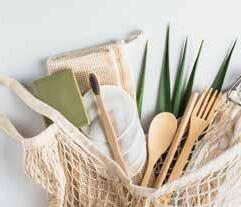


Joan Koenig, author of The Musical Child: Using the Power of Music to Raise Children Who Are Happy, Healthy, and Whole, says that engaging in a musical practice can help kids develop language awareness and social skills. Such positive results are possible even without expensive music classes or instruments.
Simple call-and-response exercises can be effective in the brain development of babies and toddlers. “We are an orchestra within ourselves; we can create rhythm, melody and harmony,” Koenig explains. “A parent or caregiver can initiate a call-and-response game by singing a song, tapping a wooden spoon on pots and pans or singing nonsense words. Babies will imitate it. When the baby is involved in this game during the first year of life, they are experiencing a connection with the person that’s doing it. It is visceral proof that they are being listened to and understood long before the development of language. You’re giving them the building blocks for both music and language. It’s about repetition and engagement.”
Basic life skills can also be learned with the assistance of music. “A march-and-stop song game allows children to practice stopping something fun and waiting, which can carry over to stopping when we’re upset and waiting until we have a thoughtful response,” says Elise Pennington, chair of the early childhood program at the Wisconsin Conservatory of Music, in Milwaukee. “Playing games like Ring Around the Rosie or Head, Shoulders, Knees and Toes can help with a number of areas. Enrolling in an organized music class where children are active participants and being challenged will help exercise a wider range of skills in a deeper way.”
“When children or adults make music together, they become part of the musical creation,” Koenig says. “When a young child feels this kind of visceral belonging, anxiety is low and empathy and confidence are high. These are the ideal conditions for all learning.”
 by Kiki Powers
by Kiki Powers
For years, we have seen a growing appreciation in contemporary culture for Traditional Chinese Medicine (TCM) and the complementary role it can play within Western medicine. Based upon thousands of years of observation, this natural healing approach can be valuable not just for humans, but also for animal companions.
Traditional Chinese Veterinary Medicine (TCVM) includes the use of food therapy, acupuncture, Chinese herbs and tui-na massage to maintain health and treat disease. Some pets with chronic arthritic pain, inflammatory bowel disease, nerve damage, epilepsy, cancer and other long-term ailments may not respond well to conventional treatments, or the side effects of Western medicine may cause even more problems. That is when TCVM can intercede to provide relief.
There are a few basic principles governing TCVM. Qi is the life force that flows freely when a pet is healthy and may be blocked or weak when a pet becomes ill. Yin-andyang refers to the interplay between natural dualities—such as light and dark or hot and cold—and the need to maintain a balance between these opposing properties. There are five elements—wood, fire, earth, metal and water—which also need to be in balance for optimal health. During an examination, a TCM vet will determine what is out of balance and develop a customized treatment plan.
Dr. Ruth Roberts, an integrative veterinarian and pet health coach, applies TCM principles when designing a whole-foods diet to Barna
optimize pet well-being and support healthy longevity. “Under TCM principles, foods have warming, cooling or neutral properties when they interact with a pet’s natural energy, and the goal is to find a balance,” she explains. “Many pet ailments may stem from or be related to imbalances within the body, as well as environmental factors, all of which underscore the need for the proper nutritional balance.”
According to Roberts, in a hot climate, a pet might need cooling foods, such as turkey, fish, banana, celery, kelp, spinach, broccoli, cabbage, cucumber and melon. In colder temperatures, warming foods such as mutton, deer, chicken, ginger, squash and pumpkin are advisable. When designing a balancing diet, neutral foods may be needed, including pork, bison, salmon, tuna, carrots, green beans, peas, olive oil and shiitake mushrooms.
Veterinary acupuncture is becoming increasingly popular to relieve pain or treat ailments, including allergies, seizures, reproductive problems and liver and kidney disease. The procedure involves the insertion of very thin needles into specific points on the body, thereby stimulating nerve endings, which then conduct impulses to the brain and spinal cord. It is best to consult an experienced, licensed acupuncturist or TCVM specialist that specifically treats pets.
In a 2017 study published in the Canadian Veterinary Journal, researchers found, “Acupuncture alone or in combination with analgesics reduced pain and improved quality




of life in dogs with neurological and musculoskeletal diseases. Dogs with musculoskeletal disorders had a better improvement in chronic pain and locomotion than those with neurological disorders.”


TCVM uses a number of herbs, roots, mushrooms, bark and other plant-based ingredients to help pets with immune dysfunction, gastrointestinal issues, skin conditions, liver and kidney disease and other long-term, chronic conditions. When it comes to more serious pet health issues, such as osteosarcoma (bone cancer), Roberts suggests the strategic use of full-spectrum hemp extract (CBD), cannabis oil (THC) and medicinal mushrooms. Dosages will differ for each individual pet. It is best to consult an integrative veterinarian or pet nutritionist.

“In several documented cases, a combination of homeopathy, TCM, medicinal mushrooms and CBD-THC solutions working together synergistically with a healing diet have helped dogs outlive their bone cancer diagnosis without harmful side effects, stressful procedures or complicated vet visits, all at a dramatically reduced cost,” Roberts says. “As they say, ‘An ounce of prevention is worth a pound of cure,’ especially where our beloved animal family members are concerned.”
Also under the TCVM umbrella, tui-na massage uses kneading, pressing and rolling
techniques to improve a pet’s health and balance. Among the conditions that respond well to this type of massage are arthritis, muscle tension and soreness, stress and anxiety, joint paint and mobility issues. The technique focuses on stimulating acupuncture points and energy pathways, or meridians, that promote the smooth flow of qi throughout the body. This treatment can be used in conjunction with complementary therapies to enhance results.


“I strongly believe Traditional Chinese Medicine is good medicine. Western medicine is great medicine. However, the best medicine is an integration of both because each of them has their own strengths and weaknesses,” says Dr. Huisheng Xie, DVM, Ph.D., a clinical professor of integrative medicine at the University of Florida College of Veterinary Medicine, in Gainesville.
According to Xie, TCVM is weak in diagnosis because it does not have sophisticated diagnostic technology. Western medicine’s weakness is the large amount of side effects associated with conventional drugs. “That’s why the best medicine is to integrate both to avoid the weaknesses and take advantage of the strengths of each,” he says.
Kiki Powers is a health writer, blogger and national speaker specializing in plant-based nutrition and healthy green living. Learn more at RawKiki.com.
WEDNESDAY, OCTOBER 4
Mid-Week Meditation – 7-8:30pm. A unique blend of short technique “helper lessons” that improve your meditation practice combined with a guided meditation with a silent portion (semi-guided). $10. Davison Holistic Therapies, 921 N State Rd, Gathering Room, Davison. Register: Tinyurl.com/ ys7rdujd.
SATURDAY, OCTOBER 7
Harris Nature Center Fall Native Plants Sale –9am-1pm. Includes Michigan native shrubs, sedges, grasses, wildflowers, ferns and complete garden kits. Harris Nature Center, 3998 Van Atta Rd, Okemos. WildOnesLansing.org.
Tarot for Beginners Series – Oct 7-Nov 11. 1-2pm. Learn the basics. Coyote Wisdom, 2338 N. Grand River, Lansing. 517-323-1707. CoyoteWisdom Store.com.
TUESDAY, OCTOBER 10
Tree Walk on MSU’s North Campus – 5:30pm. With Carolyn Miller, Botanical Technologist and Plant Recorder at the W. J. Beal Botanical Garden at Michigan State University. Beal Botanical Garden, 330 W Circle Dr, East Lansing. WildOnesLansing.org.
FRIDAY, OCTOBER 13
Cooking with Sea Moss – 6pm. Deardra Grace, owner of Nature’s 92, will demonstrate how to use raw sea moss for a multitude of purposes. Learn how to select good sea moss and prepare it, with craft recipes that allow full advantage of its benefits. Allen Neighborhood Center, 1611 E Kalamazoo St, Lansing. 517-999-3921. AllenNeighborhoodCenter. org. Natures92lc.com.
SATURDAY, OCTOBER 14
Making Strides Against Breast Cancer – 11am. Pre-walk activities, 10am; Zumba, 10:20am. Fundraising celebration of courage and hope, a movement uniting communities to end breast cancer as we know it, for everyone. Michigan State Capitol Building, 100 N Capitol Ave, Lansing. 800-2272345. LansingMIStrides@Cancer.org.
Healing Through Connecting Constellations –1-6pm. We are in relationship/connected with everyone and everything. Sometimes our experiences in life have us feeling disconnected from ourselves and others. Healing through Connecting Constellations supports you in reconnecting. $165/14 days advance, $185/ after. Constellation Healing Arts, Healing through Connecting, 28592 Orchard Lake Rd, Ste 360, Farmington Hills. 248-345-3557. ConstellationHealingArts.com.
SUNDAY, OCTOBER 15
Guided Tour of Geological Formations at “The Ledges” – 1:30-4:30pm. Ian Winkelstern, PhD, Department of Geology, Grand Valley State University will discuss the unique geology of the area. Fitzgerald Park, 133 Fitzgerald Park Dr, Grand Ledge. WildOnesLansing.org.
WEDNESDAY, OCTOBER 18
Native Seed Sorting Party – 5-7pm. A program to provide homeowners with seed packets to use in their own yards, spreading local genetic diversity of important native species. Meridian Service Center, 2100 Gaylord C Smith Ct, Haslett. Register: 517853-4614. Tinyurl.com/SeedSortingParty.
Mid-Week Meditation – 7-8:30pm. A unique blend of short technique “helper lessons” that improve your meditation practice combined with a guided meditation with a silent portion (semi-guided). $10. Davison Holistic Therapies, 921 N State Rd, Gathering Room, Davison. Register: Tinyurl. com/5n7bnz3d.
FRIDAY, OCTOBER 20
Yoga Retreat in the Countryside: Big Rapids – Oct 20-22. With holistic yoga and wellness educator Christy DeBurton. Includes a safe, peaceful country setting for rest and relaxation; 2 nights of accommodations with private baths; locally sourced, plant-based meals and snacks; a variety of all-levels yoga classes and much more. More info: YogaRoomAnnArbor.com/events-2/fall-retreat.
SUNDAY, OCTOBER 22
Witches Be Witchin’ 2023 – 12-6pm. Featuring the Mystical Marketplace with magical artists, vendors, food truck and activities. Back Parking Lot behind the Moonlit Mystic, 3019 S Wayne Rd, Wayne. 734-725-3055. MoonlitMystic.com.
Autumn Color Walk – 1pm. Leaves of red and gold decorate the trees, flowers have gone to seed and animals prepare for winter. Autumn is a wonderful time for a guided walk with a naturalist. $5/person. Harris Nature Center, 3998 Van Atta Rd, Okemos. 517-349-3866. Register: Tinyurl.com/4eec7trh.
SATURDAY, OCTOBER 28
Hunters Full Moon Drum Circle and Talking Stick Circle – 7-8:30pm. Bring your drum, rattles, singing bowls...anything that creates a vibration and join us for a healing circle full of spirit. $5. Davison Holistic Therapies, 921 N State Rd, Gathering Room, Davison. Register: Tinyurl.com/45vz7wm7.
Sound Bath Meditations for One – With Betty Gauthier, owner of Gentle Earth Sound Therapy and Holistic Wellness. $75/60 mins, $110/90 mins. To book a session: GentleEarthSoundTherapy.org.
Science Day Camps – 9am-4pm. L.A.B.S. camps are seasonal day camps during the summer, winter, and spring school breaks. Each day or week of camp is themed and thoughtfully developed for children 5-14. Offer Mini L.A.B.S. workshops, a half-day complement to L.A.B.S. camps, that take place on select Saturdays throughout the school year. Impression 5 Science Center, 200 Museum Dr, Lansing. More info: 517-485-8116 or Impression5.org.
River Walk Trash Cleanup – 11am-12pm. 1st day of each month. Join us in caring for the Earth and her waterways by picking up the trash on the Lansing River Trail and the areas around our building. Will meet each month unless it is actively raining or there is snow on the ground. Weavers of the Web, ATC, 809 Center St, Ste 8A, Lansing. 517-657-5800. WeaversOfTheWeb.org.
East Lansing Farmers Market – Thru Oct. 10am2pm. Valley Court Park, 280 Valley Crt, East Lansing. CityOfEastLansing.com.
Sunday Happy Hour – 4:20-5pm. Receive 20% off the entire order. Edgewood Cannabis, 134 E Edgewood Blvd, Lansing. 517-580-7078. EdgewoodCannabis.com.
Body Mindfulness Workshop – 9am. 2nd Mon Personal transformation coach, Samantha Gutowski, will teach you how to love your body more, how to start speaking positively toward your body, eat mindfully and nourish your body instead of restricting yourself, soften and heal your relationship with your body. Workshop consists of her sending you exercises each morning M-F for 2 wks Exercises take just 5-15 mins. Sliding scale $88-$111. BeHere NowBaby.com.
Terpy Tuesdays at The Jade Collection – 9am9pm. Selected for potency, flavor, terpene profile and distinguished genetic heritage. Special deals. 1098 E Main St, Morenci. 517-458-3009. Weed maps.com/dispensaries/jade-collection.
Hypnotherapy with Cheryl Beshada, C.M.Ht. –9:30am-7pm, by appt. Also Weds. Cheryl teaches
and specializes in personal empowerment, releasing blocks and patterns of negative behavior, higher self-communication. Free consultation. Warren. 586-899-9009.
wednesdays
Allen Farmers Market – 3-6:30pm. Year-round. Stock up on groceries and visit the Eastside Lansing Food Co-Op onsite at the same time. 1629 E Kalamazoo St, Lansing. Facebook.com/AllenFarmers Market.
Meridian Farmers Market – Thu Oct. 3-7pm. Marketplace on the Green, 1995 Central Park Dr, Okemos. 517-712-2395. Meridian.mi.us.
thursdays
Stitch In – 5-7pm. Join us with knitting, crochet, spinning, weaving, embroidery, hand sewing, macrame, or whatever else your hands are working on. An inclusive all-ages group, embracing those new to their craft through to life-long practitioners. Woven Art Yarn Shop, 325B Grove St, East Lansing. 517-203-4467. WovenArtShop.com.
Freebie Fridays – 10am-7pm. Spend $100 or more and receive a pre-roll for a penny. Edgewood Cannabis, 134 E Edgewood Blvd, Lansing. 517-5807078. EdgewoodCannabis.com.
Online: Prayer Power Hour – 12-12:30pm. Prayer changes things. Our goal is simple: to love you, pray for you, and introduce you to our loving Creator, the Great Healer. Free. Tinyurl.com/PrayerPowerHour.
Downtown Plymouth Farmers Market – Thru Oct. 8am-12:30pm. Behind Kellogg Park, 736 Penniman, Forest St, Plymouth. Tinyurl. com/3ce337xf.
Meridian Farmers Market – Thu Oct. 8am-2pm. Marketplace on the Green, 1995 Central Park Dr, Okemos. 517-712-2395. Meridian.mi.us.
Online: Self-Love Focused, Live-Chat-Session with Oracle Card Pulls – 9-10am. Set time aside for you to chat with like-minded people and receive messages of inspiration from the divine as well as motivation to move forward from Coach Sherry. Free. TikTok.com/@find_ur_happy.
Certified Hypnotherapists Education and Networking Meeting – 9:30am-12pm. 1st Sat. Certified Hypnotherapists welcome. Includes educational presentation, workbook and digital material. Clinical Hypnosis Professional Group, Warren. Register: 586-899-9009.
GREAT LAKES APPLIED POWER

740 W. Industrial Dr, Chelsea 734-897-0550
GreatLakesAppliedPower.com

We are devoted to third-generation ultra-efficient power solutions using the latest technology and advanced product design. Please contact us for more information or for assistance selecting a Power Cell or Solar Power Wagon to fit your needs! See ad page 5.
THE AHA CENTER FOR AWAKENING HEALTHY AWARENESS
Opal Wong, M.A. Educ. 4111 Okemos Rd., Ste.#102, Okemos
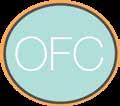

Peak performance through designed movement. Brain Gym equips people—kids, adults and seniors alike—with the designed movement techniques to reach goals they never imagined possible. Opal is available by appoinment only. Appointments can be made in person at her office Tuesday through Thursday, 12-4:30pm.
CLINICAL HYPNOSIS INSTITUTE
Cheryl Beshada, C.M.Ht. 8200 Old Thirteen Mile Rd., Ste 110, Warren 586-899-9009

ClinicalHypnosisInstitute.com
Become a Certified Hypnotherapist. Saturday and Sunday classes begin Sunday, September 24th in-person and/or online. State-licensed School— Ongoing Support. Private Sessions Available.

CHELSEA PLANK FLOORING
740 W. Industrial Dr, Chelsea 734-433-1023
ChelseaPlank.com
Natural. Beautiful. Versatile. Longevity. Green. In simplest terms, a solid plank of hardwood flooring is a piece of a tree. It is neither laminated, extruded, mixed nor reconstructed from industrial regurgitation. It’s the real deal, that which other flooring products strive to resemble and are measured against. See ad on back cover.
OKEMOS FAMILY CHIROPRACTIC
2199 Jolly Rd, Ste 140, Okemos 517-381-1880
OkemosChiro.com
Chiropractic, PEMF, Softwave, Nutrition Response Testing, Qest Biofeedback, Neuropathy, Red Light Trifecta Bed, Superhuman Protocol, Decompression, BrainTap, Normatec Compression and Halo Light therapy. See ad page 7.
WYCOFF WELLNESS
John O. Wycoff, DO

1226 E Michigan Ave, East Lansing 517-333-7270
WycoffWellness.com
We provide customized preventative care and lifestyle improvement plans for all patients. We focus on exploring natural solutions to many health problems or concerns, but do not abandon conventional medicine. We provide a blend of traditional and alternative care to help you achieve health and wellness naturally. See ad page 3 for monthly discounts.
COMPASSION 4 PAWS
VETERINARY HEALING CENTER
517-412-7171
10444 W Grand River Hwy, Grand Ledge Compassion4PawsHealing.com
Offering primary veterinary medicine and urgent care for the routine and urgent needs of your pets! Primary care includes wellness visits for all life stages of your pet. We offer vaccines, preventatives and yearly parasite screening. We help make sure your pet stays healthy with nutritional consultation and assessments. See ad page 29.



